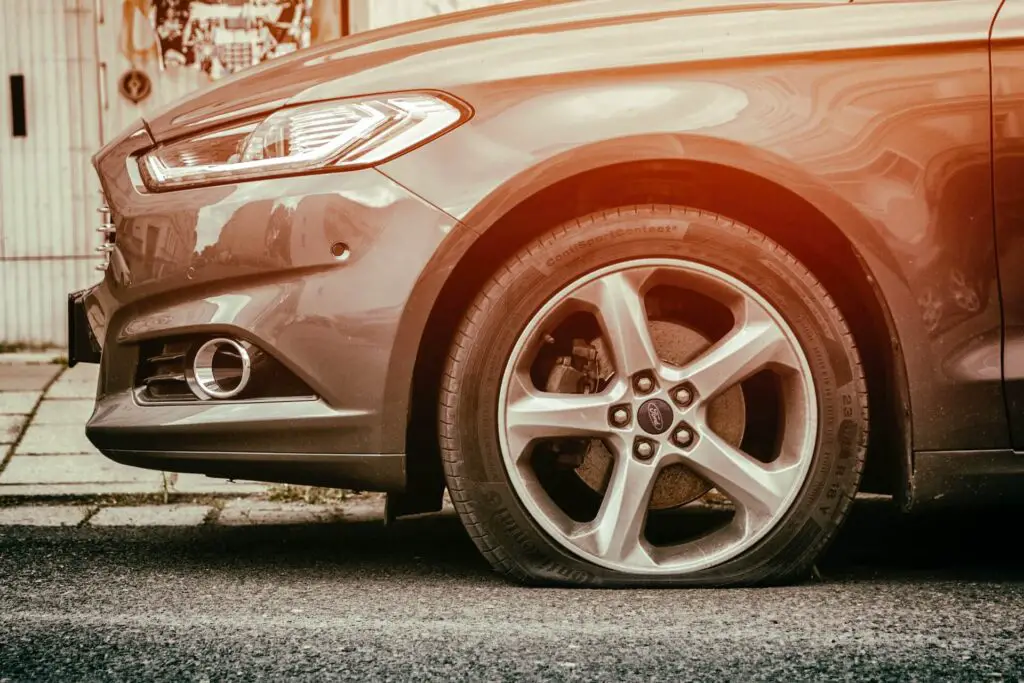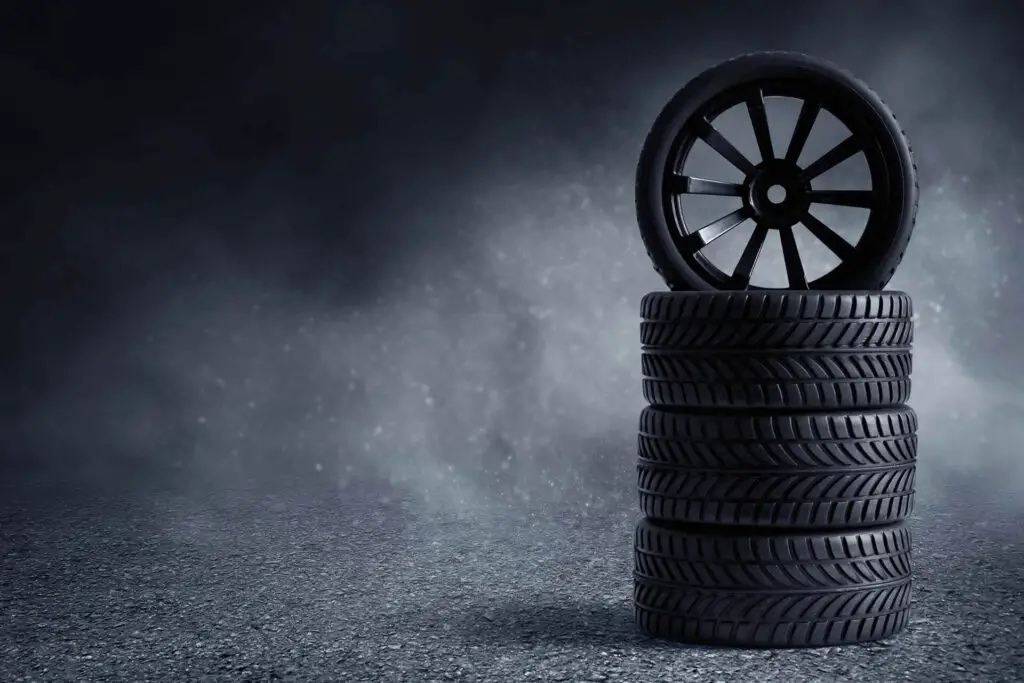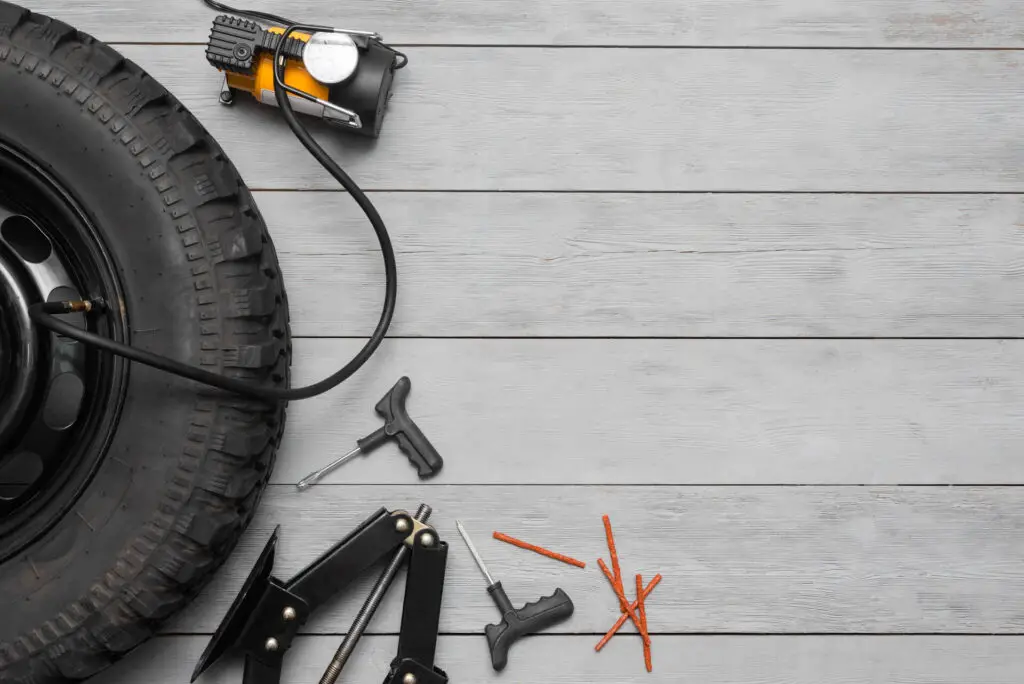As you clean out your trunk, staring at that bulky rubber ring, you might ask yourself – why do I need a spare tire? Sure, it takes up space, but that handy vehicle component is more than an accessory. It’s a roadside lifesaver! So, let’s delve into why having a spare tire is essential for your safety on the road. And how it can be a real hero in those unexpected moments. Buckle up, and let’s get rolling!
A spare tire is an essential component of roadside safety, protecting you from potential accidents and inconveniences. There are different types, including full-size, compact, and temporary, and the choice depends on your particular vehicle. Always having a well-maintained spare on hand ensures an undisturbed driving experience, offering peace of mind on the road.
Do I Need a Spare Tire?
So, does every car have a spare tire? Do new cars come with spare tires, or they don’t really need them? Is it only required for used vehicles and those with a salvage title? These questions might seem obvious and unnecessary to some, but this topic is more relevant than you might think.
Bottom line – whether you’re on a long road trip through the most famous routes in the US or just running errands around town, you should always have an extra piece. Think of it as a safety net that ensures you’re never stranded due to roadside troubles.

What’s the Role of a Spare Tire?
A spare tire is exactly what it sounds like – a backup piece that’s meant to replace a flat or damaged one. The primary purpose is simple – to get you back on the road. It’s not meant to replace the damaged one for the long haul. However, it gives you enough mobility to reach a service station or garage where proper repairs can be made.
There Are a Few Different Types
When it comes to these backup vehicle components, there are a few different types, each with the same basic purpose but also with its own set of characteristics. Let’s dive into the pros and cons of each type:
| Type | Pros | Cons |
| Full-Size | The same size as regular tires, so they can be used long-term | Takes up more space, heavier |
| Compact | Smaller, lighter, take up less space | Not suitable for long distances, less durable |
| Temporary | Designed for short distances, often lighter | Must be replaced quickly, limited functionality |
Understanding these differences can help you choose the right backup for your vehicle and ensure you’re prepared for roadside emergencies. If you own an SUV or one of those off-road driving beasts, you might opt for a full-size spare. Which matches the rest of your tires and can be long-term if needed. But if you’re zipping around the streets in a small city car, space might be at a premium, and a compact piece is your best bet.

Why Is It Important for Roadside Safety?
According to the National Highway Traffic Safety Administration (NHTSA), around 11,000 accidents occur every year due to bad, worn-out tires. Not having a spare can lead to costly delays, safety hazards, and even life-threatening situations if stuck in an isolated or dangerous location. Therefore, the simple addition of a backup in your vehicle could mean the difference between a minor inconvenience and a major catastrophe.
When Would You Need a Spare Tire?
In remote areas or situations where immediate help or repair services aren’t readily available, having a spare becomes even more critical. Without one, you could find yourself stranded for hours or even days. Here’s a list of typical situations where having an extra one in your trunk becomes necessary:
- Blowouts, which can happen suddenly and without warning,
- Punctures from debris or sharp objects on the road,
- Sidewall cuts or damage caused by hitting a curb or pothole,
- Slow leaks that, over time, lead to a flat tire.
Should You Have Tire Repair Kits and Run-Flat Tires?
When it comes to these issues, there are alternative options. First and foremost, kits such as the CKAuto Universal Tire Repair Kit are handy for minor repairs. They can get you back on the road quickly, but they may not work for more serious damage.
Also, run-flat tires allow you to continue driving for a limited distance, even with a puncture, but they can be more expensive and aren’t suitable for all types of vehicles. While these alternatives have their benefits, neither can fully replace the practicality and peace of mind provided by a regular backup.

Factors to Consider When Choosing a Spare Tire
While we’ve already discussed the three main types of spares, it’s important to recognize that there are also different types of tires in general. You’re probably familiar with the differences between summer and winter tires, but here’s a comprehensive list of some of the common types:
- All-season – versatile and suitable for most weather conditions,
- Winter – specifically designed to provide traction in snow and ice, which makes these tires essential in colder climates,
- Summer – optimized for wet and dry conditions in warmer weather, they offer enhanced performance and handling,
- All-terrain – great for off-road adventures, they can handle various surfaces, including mud, sand, and gravel.
What Are the Best Spare Tires You Can Have?
The best choice for your particular car depends on several factors. First and foremost, space and weight are important considerations, especially if you own a compact vehicle, where every inch and pound matters. You’ll also want to take into account the compatibility with your existing tires, your driving habits, and the local weather conditions.
For those who have room, the advantages of a full-size spare over a temporary one are numerous. A full-size backup can be used as a regular tire if you need it, allowing you to drive without restrictions until you can get the original one repaired or replaced. A temporary solution. On the other hand, it is only suitable for short distances and must be replaced as soon as possible.
What Cars Don’t Have Spare Tires?
In recent years, some car manufacturers have chosen to forgo including a spare tire in certain models, particularly in sports cars and high-end luxury vehicles. If you’re wondering what new cars don’t have spare tires, here’s a list of some popular options:
- Audi R8,
- BMW X3,
- Fiat 500,
- Kia Soul,
- Mazda MX-5 Miata,
- Nissan Leaf,
- Nissan GT-R.
The decision is often based on saving space and weight or the inclusion of alternatives such as run-flat tires and repair kits. So, if you’re purchasing a new vehicle, it’s wise to check whether this component is included or if you’ll need to make arrangements to have one on hand. The absence of it may not be a deal-breaker. However, understanding your options will help you prepare for unexpected road emergencies and cut down expenses in the long run.

How to Maintain Your Spare Tire?
When it comes to vehicle maintenance, the focus often falls on the main tires, engine, or brake components. But what about that spare tucked away in the trunk?
While it might be out of sight, it should never be out of mind. Just like your regular tires, the spares need regular attention and care, too. After all, a backup piece that’s in poor condition won’t be of much help if you need it in an emergency.
Here Are Some Tips on Proper Maintenance
Properly maintaining this backup piece doesn’t have to be a complicated task. Here are some key tips to ensure that your four-wheeler is ready to roll when needed:
- Check the pressure – regularly check the air pressure to make sure it’s at the recommended level,
- Inspect for damage – look for cracks, bulges, or other signs of damage that could affect performance,
- Protect from weather – if stored outside the vehicle, keep it protected from extreme weather conditions to avoid deterioration,
- Rotate if necessary – if using a full-size space, include it in your regular rotation schedule,
- Keep it clean – dirt and debris can affect the spare’s integrity, so give it a good clean now and then.
Regular Inspection Is Vital
While these maintenance tips are essential, nothing replaces a regular, thorough inspection by a professional. Regularly having your backup inspected, especially before long trips or if it has been in storage for an extended period, is vital to ensure it’s in optimal condition.
An inspection will not only look at the physical condition but also check the fit with your vehicle’s rim and alignment. By keeping your spare in prime condition, you’re not just safeguarding your vehicle – you’re ensuring your safety and peace of mind on the road.

Make Sure Your Driving Experience Is Undisturbed by Having All the Necessary Equipment
Let’s face it – no one wants their drive interrupted by a flat tire, especially when you’re cruising down an open road with your favorite tunes playing. But hey, life happens! Having all the necessary equipment, including that trusty spare tire, ensures that even if you hit a bump in the road, you won’t be left stranded. So give that backup a pat next time you’re loading up the trunk, knowing it’s there to keep your journey rolling smoothly. Safe travels!
Frequently Asked Questions About Spare Tires
What Types of Spare Tires Are Available for My Car?
Spares come in three main types: full-size, compact, and temporary. Your choice depends on your vehicle size, preferences, and storage space.
Do All New Cars Come With a Spare Tire?
No, some new cars, particularly sports cars and luxury models, might not include a backup. Always check with the manufacturer or dealer for specifics.
How Often Should I Check or Maintain My Spare Tire?
It’s wise to check your extra tire’s pressure and condition monthly and have it professionally inspected before long trips or if it’s been in storage for a while.
Can I Use a Temporary Spare Tire for a Long Journey?
No, temporary spares are designed for short distances only. They should be replaced with a regular one as soon as possible.
Is It Necessary to Have a Spare Tire, or Can I Rely on a Repair Kit?
While repair kits can be handy for minor repairs, they can’t replace the practicality of a backup, especially for more serious damages. Having a spare piece is universally recommended.








